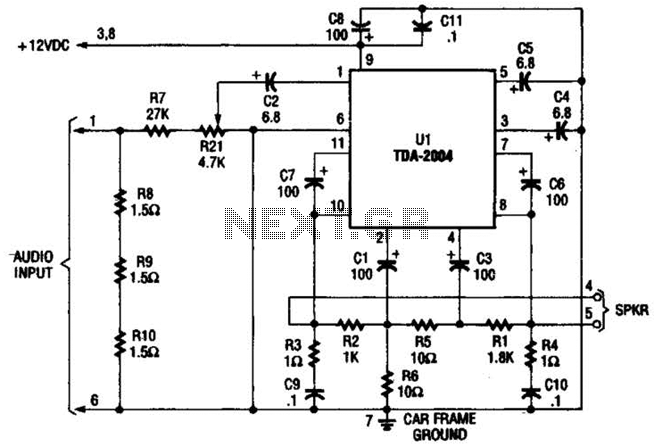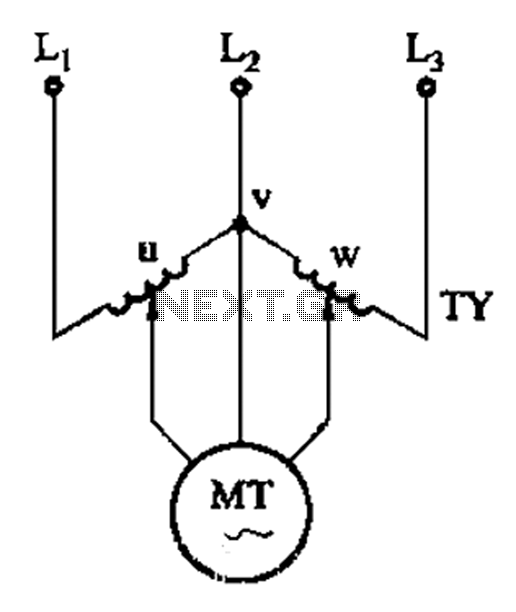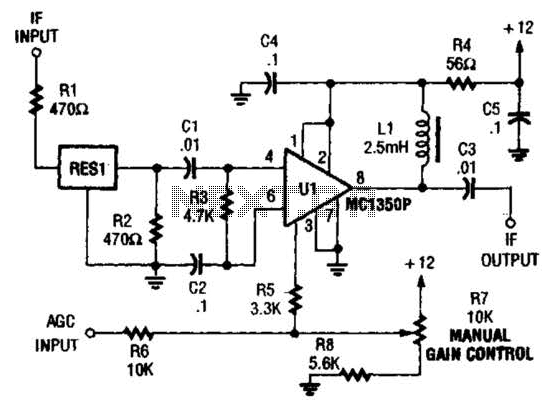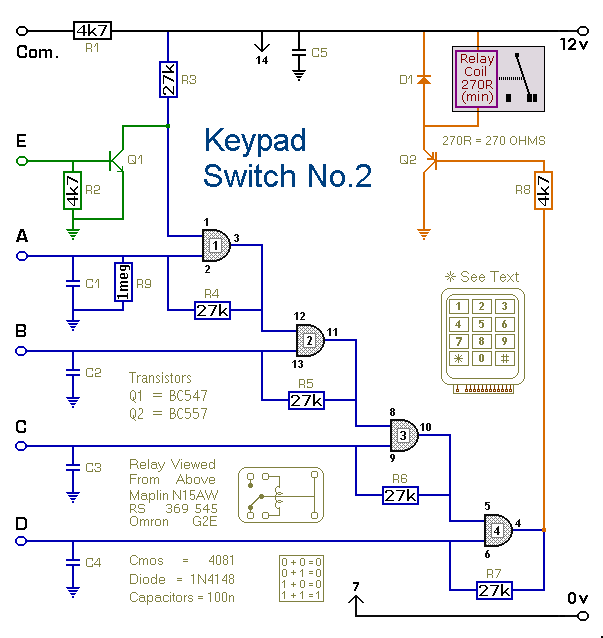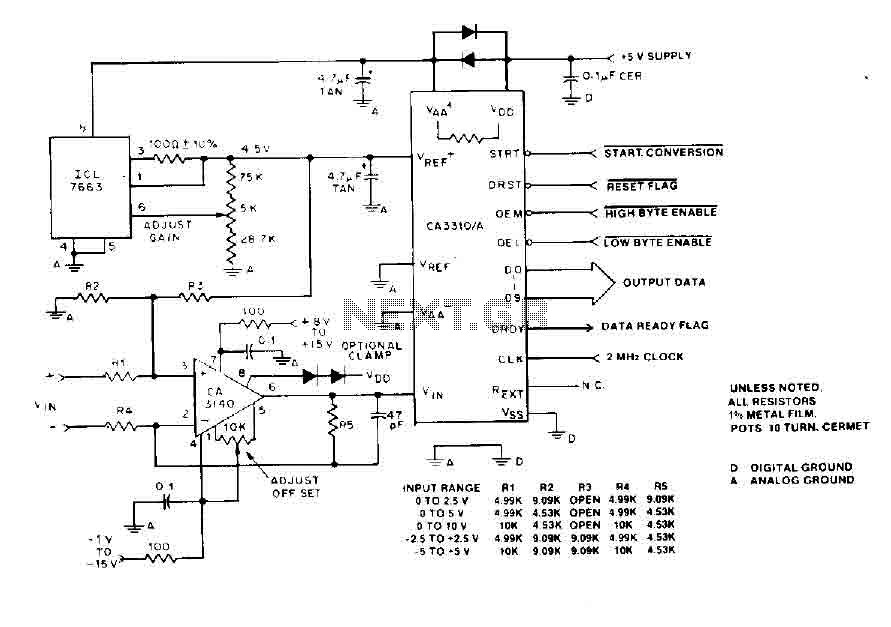
Low frequency oscillation circuit

Gates F4, F5, and F6 together form a low-frequency oscillator that drives high-brightness light-emitting diode (LED) flashes. The light-emitting diodes may be arranged around the booth seat for decorative purposes. The automatic referral machine is used prior to operation to pre-record audio. Recording begins when the K2i button is pressed and held, causing the speaker to emit a "beep" tone. The user then speaks into the microphone for recording. Once the voice recording for the product presentation is completed, the S2 button is released, and the speaker emits a "beep," indicating the end of the recording. If the recording time exceeds the duration allowed by the chip, a series of "tick, tick" beeps will sound, indicating that the recording has been forcibly terminated. The S1 button functions as a stop button, allowing the user to halt the machine's audio description at any time.
The circuit described involves a combination of gates and components that facilitate the functionality of a low-frequency oscillator, which is essential for generating the flashing signals for the high-brightness LEDs. The arrangement of LEDs around the booth seat enhances visual appeal, making the setup suitable for various applications, such as exhibitions or displays.
The K2i button serves as a trigger for initiating audio recording. When pressed, it activates the recording circuit, which includes a microphone and an audio processor. This processor captures the user's voice and converts it into a digital format for storage. The feedback provided by the initial "beep" indicates that the recording is active, ensuring that users are aware of the operational status.
Upon completion of the voice recording, the S2 button is utilized to finalize the recording session. The subsequent "beep" from the speaker serves as an audible cue that the recording has ended successfully. In scenarios where the recording exceeds the allowed duration, the circuit is designed to emit warning beeps, thus preventing unintended extensions of the recording time. This feature is crucial for maintaining the integrity of the recorded message and ensuring that it fits within the designated playback parameters.
The S1 button is pivotal in providing user control over the playback of the recorded message. By pressing this button, the user can stop the audio output at any moment, allowing for flexibility during presentations. This functionality is particularly beneficial in dynamic environments where user interaction is essential.
Overall, the integration of these components within the circuit not only enhances user experience but also ensures that the device operates efficiently, providing both visual and auditory stimuli that can be tailored to specific needs. The design considerations reflect a balance between functionality and user interface, making the circuit suitable for a variety of applications in decorative and informative settings.Gate F4, F5, F6 together form a low frequency oscillator, driving high brightness light-emitting diode flashes, light emitting diodes may be arranged around the booth seat, play a decorative role. (4) use of goods automatic referral Shao machine prior to use pre-recorded, recording K2i then press and hold the speaker will issue a "beep" beep tone, then toward the microphone for recording. The voice recording product presentation prepared after completion of release S2, the speaker will then issue a "beep" is heard, indicating the end of recording, if the recording time exceeds the time allowed by the chip, when the sheet reaches Cang allow time will be issued a "tick, tick "beep twice forced to end recording.
S1 is the stop button, the machine language product description describes the sound as long as the answer it when you can stop Sl voice introduction.
The circuit described involves a combination of gates and components that facilitate the functionality of a low-frequency oscillator, which is essential for generating the flashing signals for the high-brightness LEDs. The arrangement of LEDs around the booth seat enhances visual appeal, making the setup suitable for various applications, such as exhibitions or displays.
The K2i button serves as a trigger for initiating audio recording. When pressed, it activates the recording circuit, which includes a microphone and an audio processor. This processor captures the user's voice and converts it into a digital format for storage. The feedback provided by the initial "beep" indicates that the recording is active, ensuring that users are aware of the operational status.
Upon completion of the voice recording, the S2 button is utilized to finalize the recording session. The subsequent "beep" from the speaker serves as an audible cue that the recording has ended successfully. In scenarios where the recording exceeds the allowed duration, the circuit is designed to emit warning beeps, thus preventing unintended extensions of the recording time. This feature is crucial for maintaining the integrity of the recorded message and ensuring that it fits within the designated playback parameters.
The S1 button is pivotal in providing user control over the playback of the recorded message. By pressing this button, the user can stop the audio output at any moment, allowing for flexibility during presentations. This functionality is particularly beneficial in dynamic environments where user interaction is essential.
Overall, the integration of these components within the circuit not only enhances user experience but also ensures that the device operates efficiently, providing both visual and auditory stimuli that can be tailored to specific needs. The design considerations reflect a balance between functionality and user interface, making the circuit suitable for a variety of applications in decorative and informative settings.Gate F4, F5, F6 together form a low frequency oscillator, driving high brightness light-emitting diode flashes, light emitting diodes may be arranged around the booth seat, play a decorative role. (4) use of goods automatic referral Shao machine prior to use pre-recorded, recording K2i then press and hold the speaker will issue a "beep" beep tone, then toward the microphone for recording. The voice recording product presentation prepared after completion of release S2, the speaker will then issue a "beep" is heard, indicating the end of recording, if the recording time exceeds the time allowed by the chip, when the sheet reaches Cang allow time will be issued a "tick, tick "beep twice forced to end recording.
S1 is the stop button, the machine language product description describes the sound as long as the answer it when you can stop Sl voice introduction.
